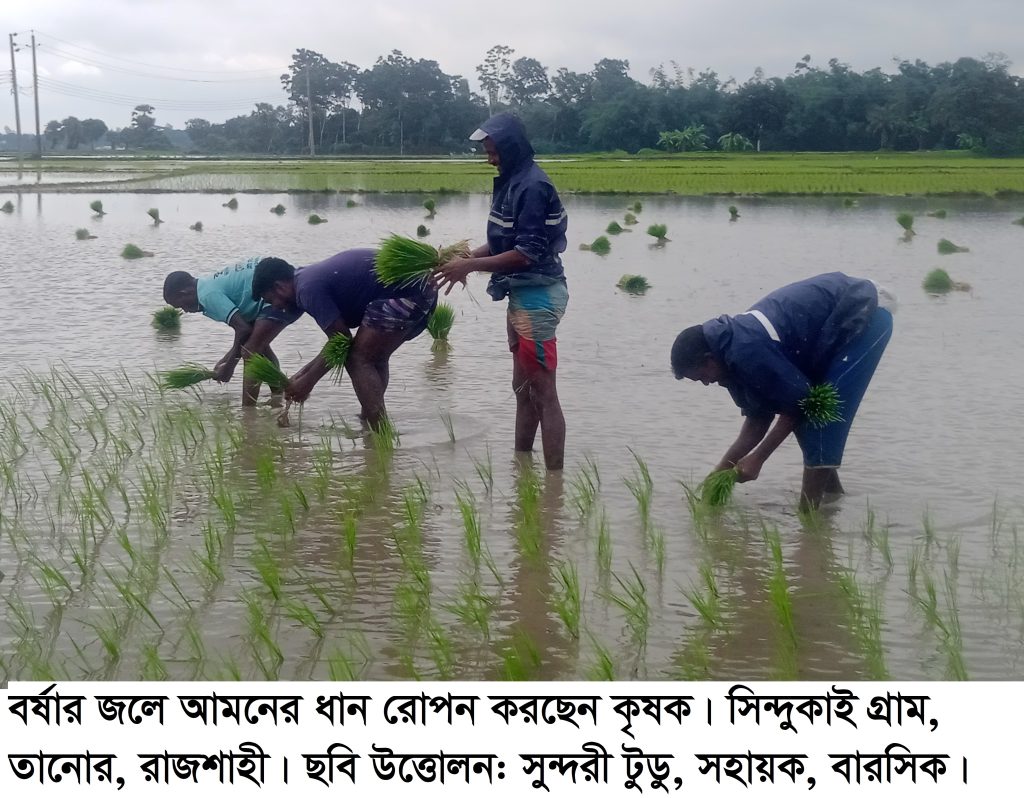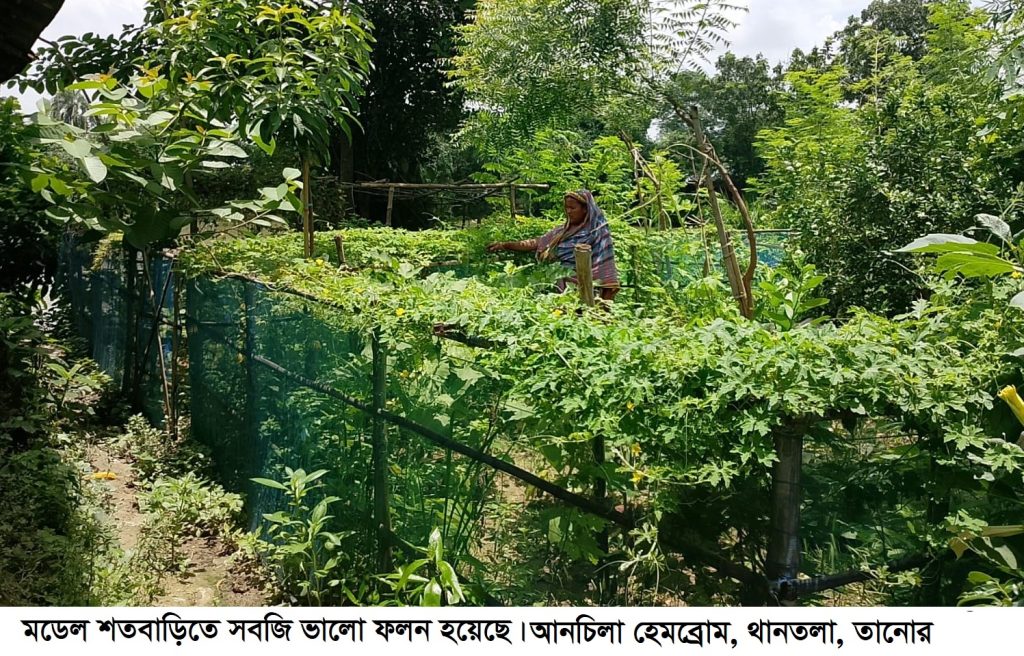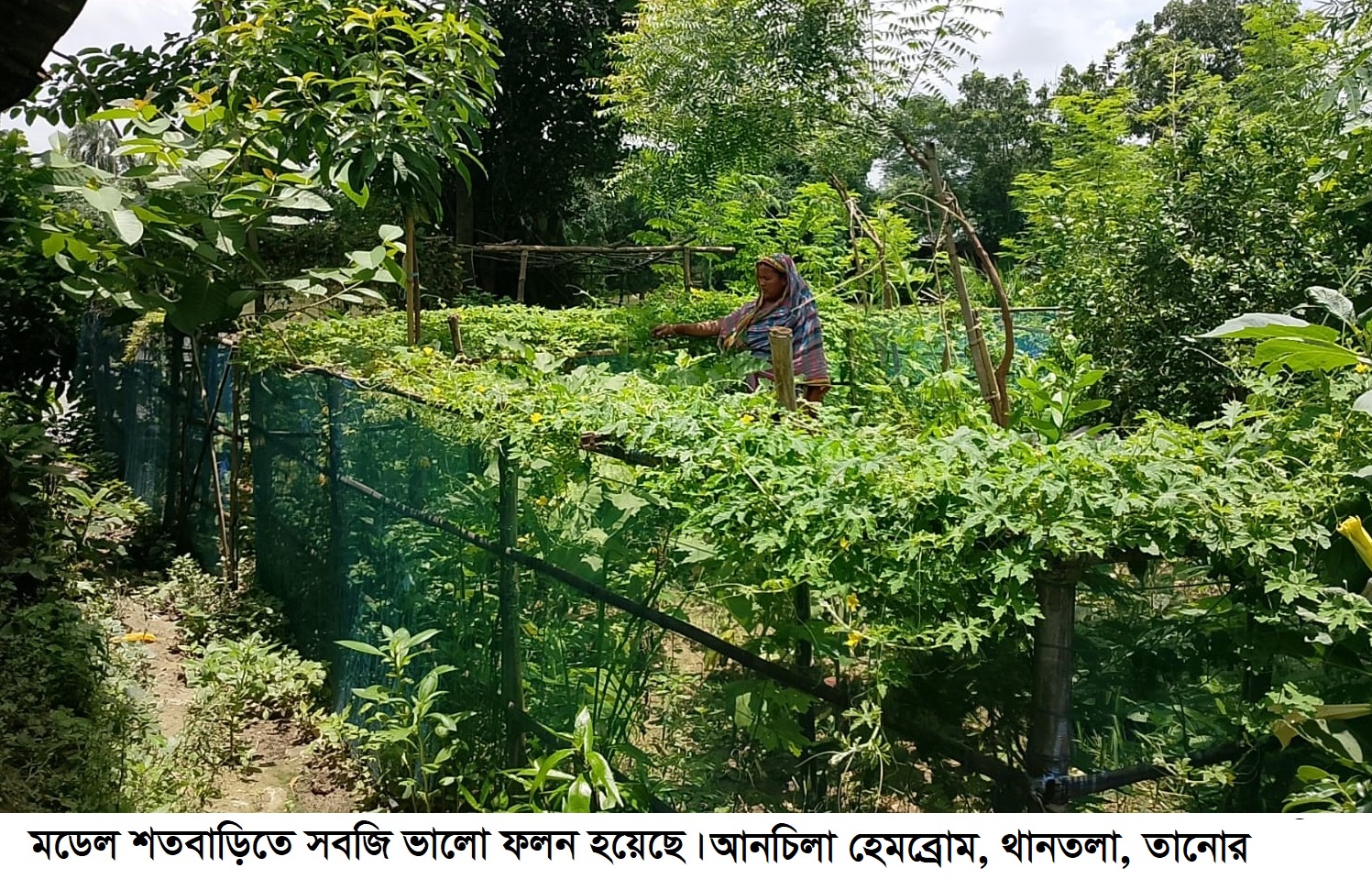By Md. Shahidul Islam from Rajshahi
In the drought-prone region of Barind, the long-awaited monsoon has finally returned with rhythm and regularity, bringing a wave of joy and revival to both agriculture and aquatic life. At the village of Duboil in Tanore upazila, Rajshahi, farmer Zayedul Islam smiles with happiness as he says, “This time we got a proper monsoon. It feels like we have gone back to the old days. There is water everywhere, and life is thriving all around.”
Standing beside him, another farmer, Arman Ali, laughs and says, “I have not seen this many native fish in 20 to 25 years!”He explains that timely rains allowed the fish to spawn naturally, leading to an abundance of native fish in local water bodies. Nearby, farmer Masud Rana points out the economic relief saying, “This year, I have saved at least 5,000 to 7,000 taka. Usually, I have to pump water from deep tube-wells to transplant rice, but this time I did not spend a single penny.”

Such scenes of contentment and optimism are echoed throughout the Barind region this monsoon season. After two decades of erratic and insufficient rainfall, the skies have finally delivered their life-giving gift just in time. In a region where timely rainfall was more a matter of chance than certainty, this year’s consistent downpour feels nothing short of a blessing. For the people of Barind, who have long struggled with drought this rain brings them both water and hope.
Renowned farmers confirm that in the past 20 years, irregular monsoons were a harsh reality. As a result, the window for transplanting aman rice would often pass, forcing farmers to rely on expensive, pump-driven irrigation. This increased production costs and added to their risks. But with this year’s timely rains, farmers could rely on natural water sources, ensuring timely transplanting, healthy seedling growth, and well-watered fields.
The blessings of the monsoon are not limited to rice. Wetlands and canals have also seen a positive transformation. Native fish species such as tengra, shing, punti, magur, and shrimp have returned in abundance, having successfully laid eggs and reproduced. This development is not only ecologically significant but also crucial for rural nutrition and livelihoods. The increased fish population supports both household consumption and local market demands, contributing to the rural economy.
Vegetable cultivation, too, has seen impressive results. In the fertile land of Borogachhi Union, known as the vegetable capital of Paba upazila, farmer Monira Khatun proudly mentions an exceptional yield of pointed gourd (potol) saying. “I have never seen such a harvest from one bigha of land before,” she says. However, her joy is tempered by disappointment over falling market prices. The increased rainfall improved soil moisture and fertility, enhancing vegetable quality and yield while reducing pest attacks. Fields are now filled with brinjal, gourd, bitter gourd, cucumber, and other seasonal vegetables.
In Kargigar Para of Borogachhi, around nine women farmers produce and use vermicompost on their own land, also selling the surplus. One of them, Bilkis Begum, shares that this season’s rainfall has reduced irrigation costs and boosted yields. Their vegetables, grown without chemical pesticides and using natural pest repellents, are not only safe for health but also beneficial for the environment.

This season’s rainfall offers more than just relief. It reminds us that when nature follows its rhythm, agriculture thrives, biodiversity is conserved, and rural lives flourish. It underscores the need for localized strategies to cope with climate change. Traditional water conservation methods like restoring natural water bodies, canals, ponds, and dighis must be strengthened. These natural resources are critical during droughts and also help to sustain fish populations.
However, the rains have also brought challenges. With increased water and poor drainage, many areas are now facing waterlogging. Excessive pond digging in triple-crop lands has reduced available farmland. In places like Borogachhi, farmers now face human-induced disasters as vegetable fields and rice fields submerged due to stagnant flood waters.
Therefore, we must take a holistic approach to protect agricultural lands and prepare for future floods. It is not just the responsibility of farmers. Administrative action is urgently needed to stop unplanned pond digging in farmland. We must promote climate-resilient farming practices, conserve climate-suitable crop varieties, and ensure long-term sustainability for Barind’s vulnerable farming communities.

